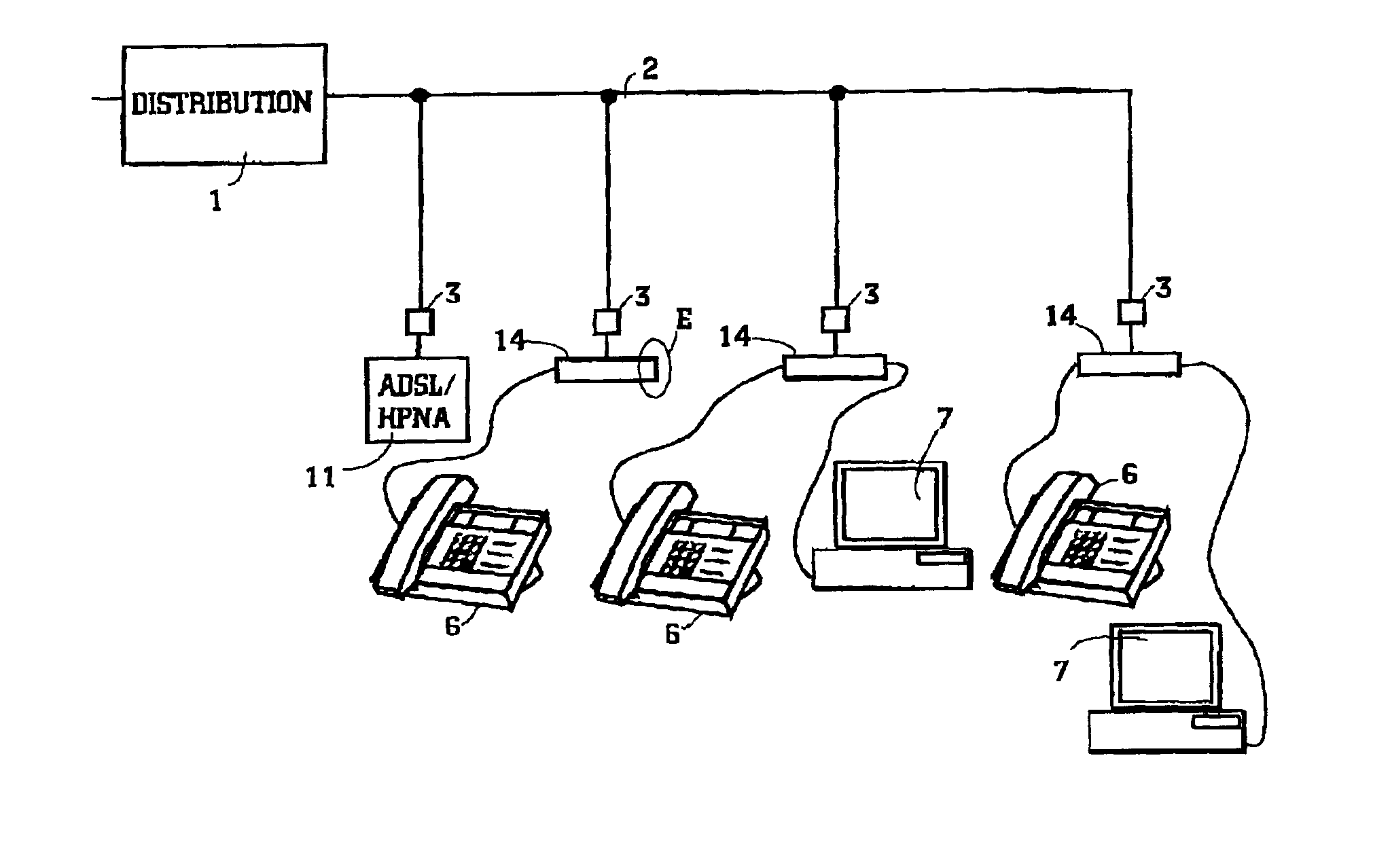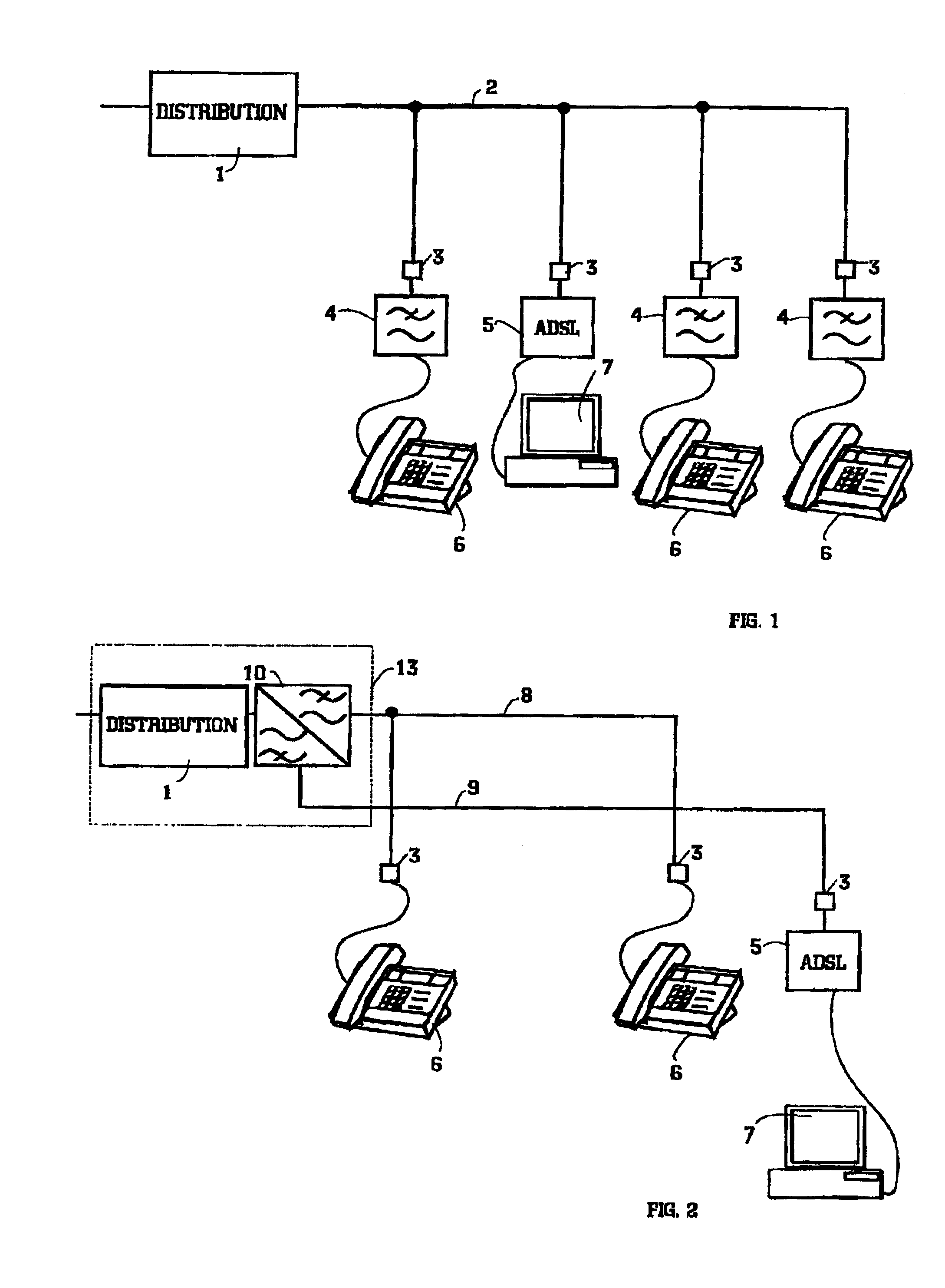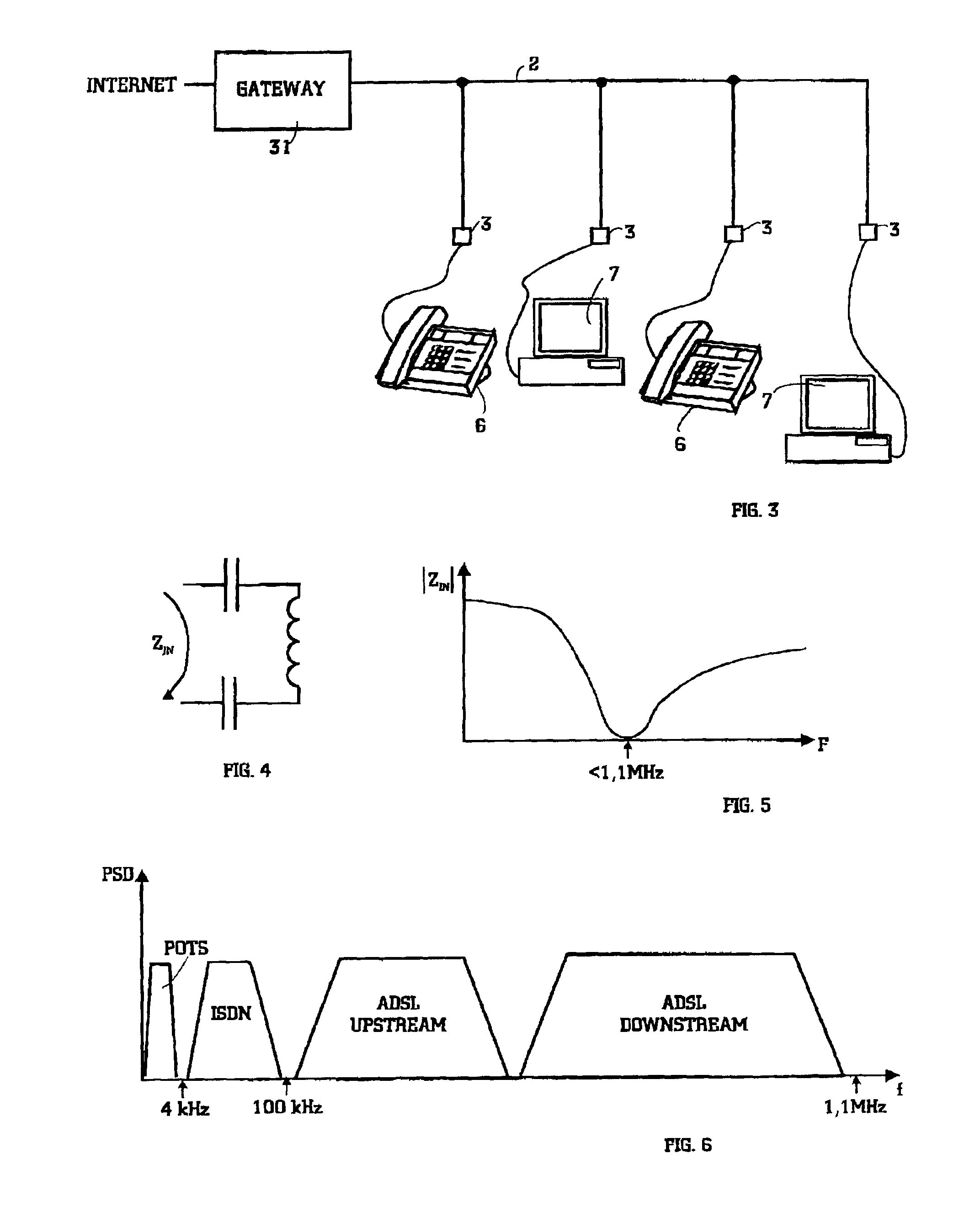Arrangement of local area network
a technology of local area network and arrangement, applied in the field oflans, can solve the problems of twisted pair line, increase the cost of operators, and adsl techniqu
- Summary
- Abstract
- Description
- Claims
- Application Information
AI Technical Summary
Benefits of technology
Problems solved by technology
Method used
Image
Examples
Embodiment Construction
[0031]As mentioned before, usually there is no problem when a subscriber uses a POTS line as a transmission technique to the outside world. But if the subscriber uses an ADSL line as a transmission technique, problems exist. As showed in FIGS. 1 and 2, the computer (and another device), which uses ADSL, is connected to the ADSL modem, which in turn is connected to the telephone socket. POTS terminals are behind low-pass filters. When it is desired to connect the computers together forming a LAN inside the customer's premise, a new frequency range becomes apparent, namely the frequency range of the LAN. In this context, primarily the LAN of HPNA is described. The frequency range of HPNA is about 4-10 MHz. So it is above the frequency ranges of POTS and ADSL as can seen in FIG. 6. So, there are 3 different types of signals in a distribution network, which should be kept separate from the terminals or stations of each other signal type.
[0032]FIG. 7 shows an example of an arrangement ac...
PUM
 Login to View More
Login to View More Abstract
Description
Claims
Application Information
 Login to View More
Login to View More - R&D
- Intellectual Property
- Life Sciences
- Materials
- Tech Scout
- Unparalleled Data Quality
- Higher Quality Content
- 60% Fewer Hallucinations
Browse by: Latest US Patents, China's latest patents, Technical Efficacy Thesaurus, Application Domain, Technology Topic, Popular Technical Reports.
© 2025 PatSnap. All rights reserved.Legal|Privacy policy|Modern Slavery Act Transparency Statement|Sitemap|About US| Contact US: help@patsnap.com



